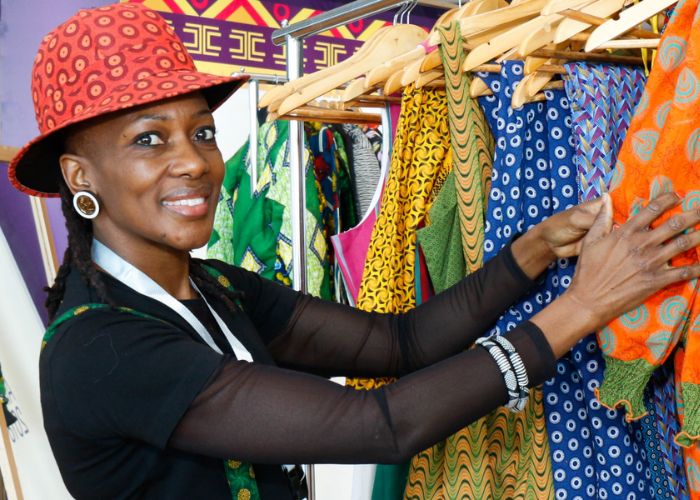Style rises above a simple feel; it fills in as a dazzling document, winding around stories of culture, social change, and verifiable occasions into the actual texture of our clothing. Printed clothing, specifically, goes about as a lively material, depicting stories and images that reverberate across ages. Let’s read below “History Told Through Fashionable Printed Clothing”:-
History Told Through Fashionable Printed Clothing
This article sets out on an excursion through time, investigating how printed clothing has been utilized to recount stories, praise legacy, and report verifiable minutes.
Ancient Echoes: The Early Days of Printed Clothing
The historical backdrop of printed clothing extends back hundreds of years, with early models tracked down in old human advancements:
- Egypt: The Egyptians utilized stencils to adorn materials with mathematical examples and strict themes. These prints held representative importance, frequently portraying gods or offering scenes from day-to-day existence.
- China: The Chinese are credited with concocting block printing around 200 BC. This method took into account the large-scale manufacturing of printed textures including complex flower and creature plans.
- India: India has a rich history of printed materials, with methods like Kalamkari and Bandhani utilizing normal colors to make lively and representative examples on cotton textures. These prints frequently portrayed strict stories or conveyed societal positions.
Messages on Fabric: The Rise of Printed Clothing in Europe
The appearance of printed clothing in Europe denoted a huge change in style:
- The Renaissance: The creation of the print machine in the fifteenth century altered material printing. Woodblock printing took into account the making of additional itemized designs, frequently portraying strict scenes or fanciful figures.
- The Modern Unrest: The Modern Upheaval prompted the large-scale manufacturing of printed materials, making them more available to the average workers. This period saw the ascent of flower prints, paisley themes, and stripes, mirroring a developing accentuation on self-articulation.
Beyond Aesthetics: Printed Clothing as a Tool for Social Commentary
Printed clothing has not forever been about a simple feel. From the beginning of time, it has been utilized as a device for social discourse:
- The French Insurgency: During the French Upset, printed clothing with progressive images like the Phrygian cap and tricolore banner filled in as a strong image of disobedience against the government.
- The Abolitionist Development: In the nineteenth hundred years, abolitionists utilized printed clothing highlighting slaves in chains or abolitionist servitude trademarks to bring issues to light about the repulsions of bondage.
- The Ladies’ Testimonial Development: Suffragists embraced explicit varieties and prints, similar to purple, green, and white, to represent their battle for ladies’ more right than wrong to cast a ballot.
- Observing Legacy: Printed Attire and Social Personality
Celebrating Heritage: Printed Clothing and Cultural Identity
- African Wax Prints: African wax prints, otherwise called Ankara, brag striking mathematical examples and dynamic tones. These prints address different nationalities and social stories, filling in as a strong image of African legacy.
- Kimono in Japan: The kimono, a conventional Japanese piece of clothing, highlights many-sided printed plans mirroring the wearer’s economic well-being and event. The themes and varieties hold profound social importance.
- Plaid in Scotland: The plaid, an image of Scottish groups and families, is a great representation of how printed clothing implies social character.
The Modern Canvas: Printed Clothing in the Digital Age
The computerized age has introduced another period of printed clothing:
- Computerized Printing: Current printing methods consider top caliber, nitty gritty plans on a more extensive scope of textures. This engages originators to make extraordinary and customized pieces.
- Quick Style: The ascent of quick design has made printed clothing more available than any time in recent memory. Be that as it may, worries about moral creation and ecological effect should be tended to.
- Autonomous Originators: Free creators are using advanced stages to make exceptional printed clothing that celebrates social causes, individual accounts, and imaginative articulation.
Read More:-Trends and Styles How to Wear the Latest Fashion
Fashion Becomes More Than Just Clothing
Design turns out to be something other than dress; it changes into a living chronicle, an ice breaker, and a stage for self-articulation that rises above expressed words. Here are a few different ways we can keep on investigating the force of printed clothing:
- Gallery Visits: Investigate exhibition halls with shows on authentic design. These assortments offer a firsthand glance at printed pieces of clothing and the narratives they hold.
- Supporting Neighborhood Craftsmen: Search out and uphold nearby craftsmans who make printed clothing that mirrors their social legacy or individual accounts.
- Upcycling and Reusing: Give old printed clothing a renewed outlook by upcycling or reusing them into new articles of clothing or embellishments.
- Making Your Own Story: Use advanced printing administrations or investigate screen printing strategies to make your own printed clothing with customized plans or messages.
- Taking part in Discussions: Utilize printed clothing as a springboard for discussions about history, culture, and social issues.
Printed clothing isn’t simply a style proclamation; it’s a scaffold among at various times, a material for self-articulation, and an integral asset for narrating. As we dive further into its rich history and embrace its prospects, we can tackle the influence of printed dress to commend our legacy, interface with others, and make an additional energetic and significant world.
A Final Note:
Style is an excursion of revelation. By valuing the narratives woven into printed clothing, we can leave an enrapturing investigation of history, culture, and self-articulation. Allow us to utilize this information to look sleek as well as to wear our qualities and stories on our sleeves (or dresses, shirts, and whatever other piece of clothing that considers a strong printed message). I hope you like reading “History Told Through Fashionable Printed Clothing”.

